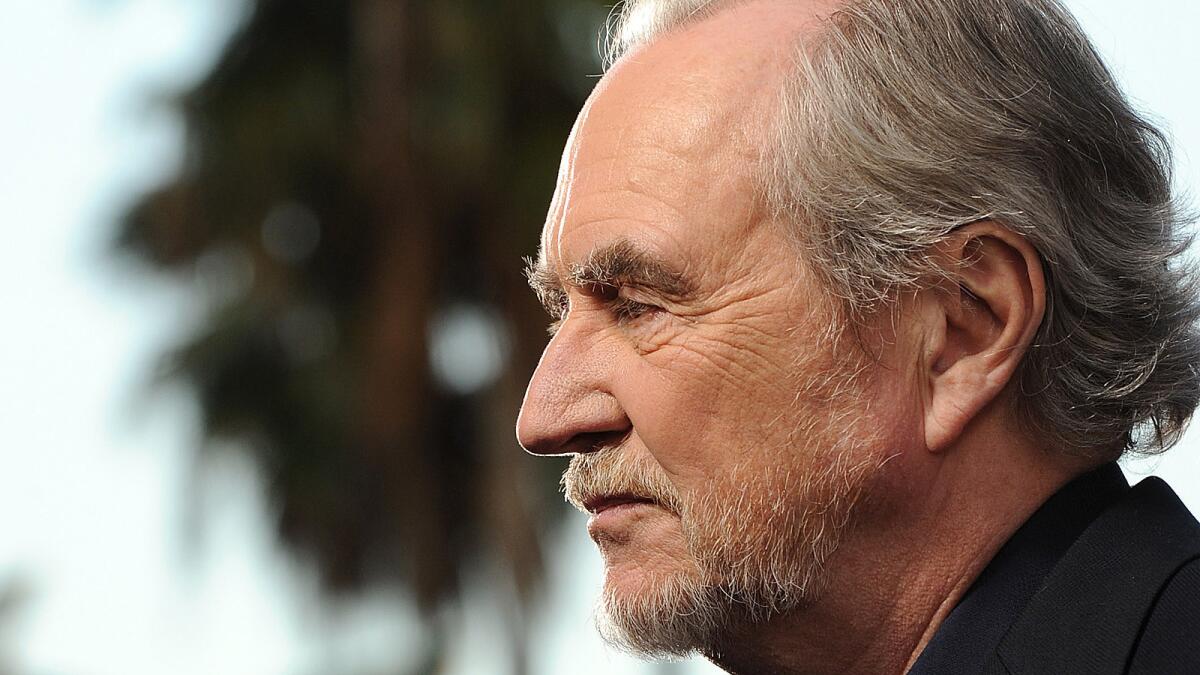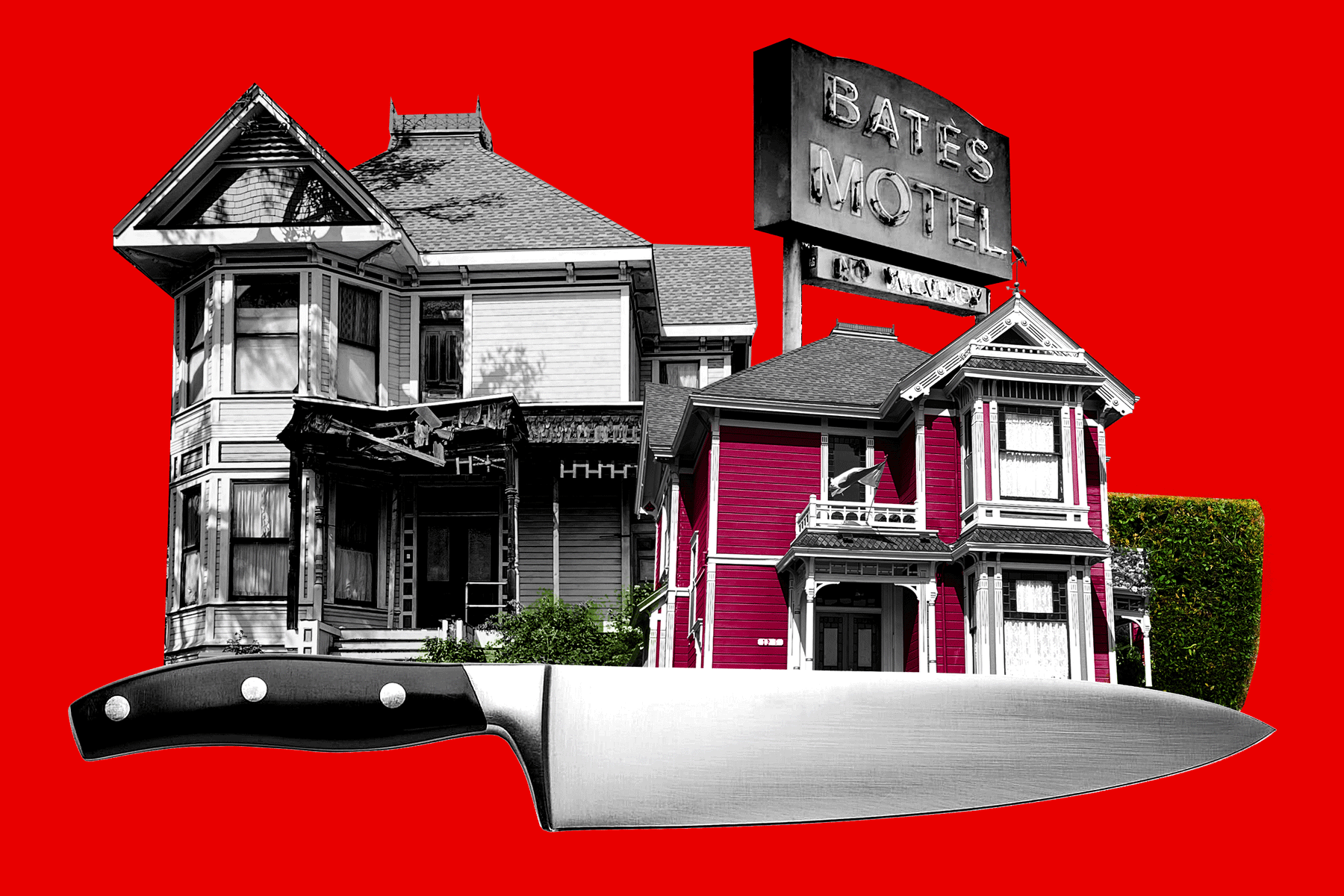From the Archives: Wes Craven’s retirement plan? ‘My goal is die in my 90s on the set’

Writer/Director Wes Craven is best known for horror franchises “Nightmare on Elm Street” and “Scream.”
- Share via
Los Angeles Times reporter Susan King interviewed director Wes Craven as he was about to be the subject of a retrospective -- “Merchant of Nightmares: A Tribute to Wes Craven” -- at the Aero Theater in 2010.
For close to four decades, Wes Craven has been a true master of screen terror with films such as “The Last House on the Left,” “The Hills Have Eyes,” “A Nightmare on Elm Street” and the “Scream” trilogy.
It’s startling, then, to learn that Craven was never a moviegoer as a child. He didn’t sit down in the dark with Hollywood until he was already teaching at Clarkson College in Potsdam, N.Y. His parents were strict Baptist who forbade him to see movies and his student years didn’t offer a reprieve.
“I went to a Christian college,” says the 70-year-old Craven. “You would be expelled if you were caught in a movie theater. It was ridiculous.”
Thankfully, there was an art house theater in Potsdam. “It was right during that time in the 1960s when all the European directors were cranking out those incredible pictures.”
One of the films he saw in Potsdam was Ingmar Bergman’s Oscar-winning 1960 revenge tale, “The Virgin Spring.”
“It was the simplicity of the story line that stuck in my head,” he says. It inspired his first film, 1972’s “The Last House on the Left,” which screens Saturday night along with the 1977 film “The Hills Have Eyes” at the American Cinematheque’s Aero Theatere in Santa Monica.
Craven will be on hand Sunday evening at the Aero to discuss his career. The presentation will be staged between the screenings of 1991’s “The People Under the Stairs” and 1988’s “The Serpent and the Rainbow.”
“Last House on the Left” was made for a humble $90,000. The producers were a group of theater owners in Boston who ran drive-ins.
“The original budget was $50,000, but when the producers read the script they liked it so much they said, ‘We’ll give you another 40,’” Craven recalls. “They used to commission low-budget films for their second bill, so they didn’t have to pay the studio for the second feature. As soon as our film started running, it took over a whole chain. It created a kind of sensation. There were stories of fistfights and faintings and heart attacks. There were people assaulting the projection booth trying to destroy the print.”
Maverick producer Sam Arkoff picked up the film and released it nationally through American International Pictures. The success was a shock for Craven.
“I didn’t know a thing about directing,” he says. “I staged it like a documentary because the year or two I learned the basics of film, I worked in a building that had mostly documentary filmmakers. I used a guy who was a documentarian to be the cameraman. We had a crew of about seven people.”
His cast and crew were far larger by 1988 and “The Serpent and the Rainbow,” which was released by Universal Pictures. The movie starred Bill Pullmanas a Harvard ethnobotanist-anthropologist who is approached by a pharmaceutical company to go to Haiti to learn about drugs used in the voodoo religion.
“It was a pretty ambitious film,” Craven said. “We shot there [in Haiti] for 11 days. We were there six months after Baby Doc [aka Jean-Claude Duvalier was overthrown]. People were ready to love you or kill you. We went across the border into the Dominican Republic. It was a lot safer.”
Craven recently finished “My Soul to Take,” which is scheduled for release sometime this year. And in May (if negotiations go as expected) he will start on “Scream 4.” And after that?
“My goal is to die in my 90s on the set, say, ‘That’s a wrap,’ after the last shot, fall over dead and have the grips go out and raise a beer to me.”
More to Read
The biggest entertainment stories
Get our big stories about Hollywood, film, television, music, arts, culture and more right in your inbox as soon as they publish.
You may occasionally receive promotional content from the Los Angeles Times.











